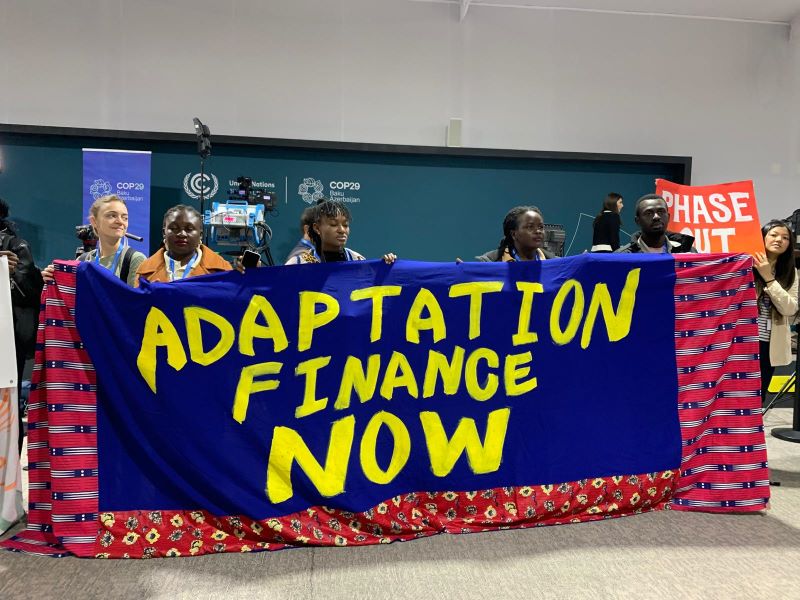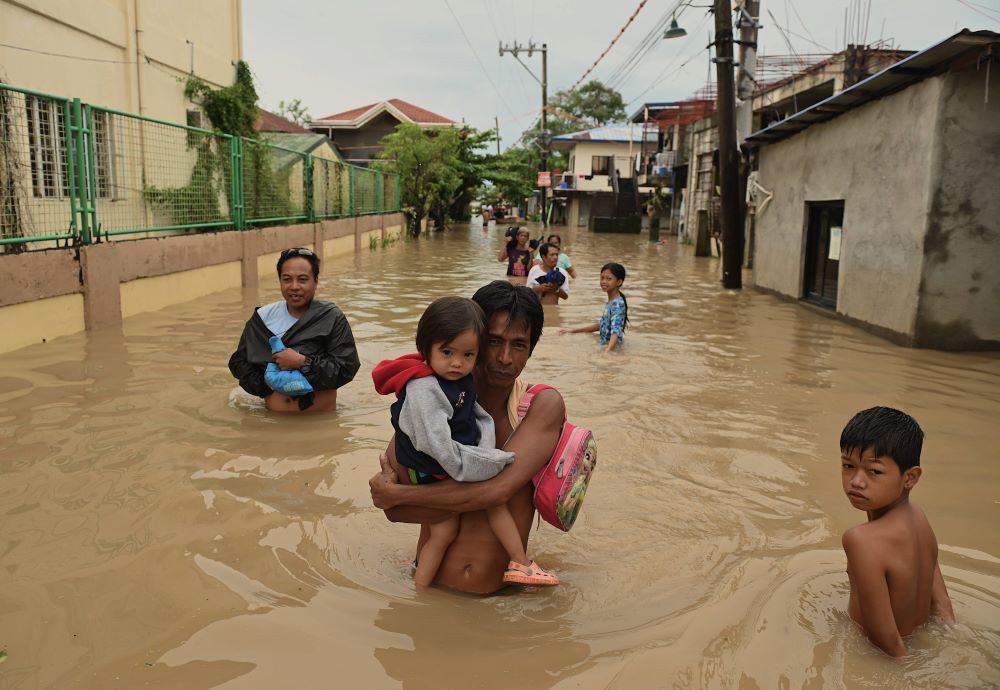From the floods that have swept through Spain to typhoons battering the Philippines, extreme weather is hitting the world hard – but even after years of warnings about the need to adapt to the perils of a hotter world, vulnerable countries and communities are unlikely to get much immediate help from the COP29 climate summit, officials told Climate Home.
There’s a “great paradox” in evidence at the UN summit in Azerbaijan between leaders’ speeches urgently calling to keep people safe from worsening climate change impacts – and the apparent lack of money available to do that, Mikko Ollikainen, the head of the Adaptation Fund, said in an interview.
The UN fund – which has been at the cutting edge of efforts to build resilience to extreme weather and rising seas for the last 15 years – only managed to secure contributions of around $61 million from donor countries at a fundraising event on Thursday, against its annual goal of $300 million.
This despite exhortations from UN Secretary-General Antonio Guterres and the UN climate chief Simon Stiell at the start of COP29 for rich countries to fill the huge gap in adaptation funding, which could reach $187 billion-$359 billion a year by 2030.
“These missing dollars are not abstractions on a balance sheet: they are lives taken, harvests lost, and development denied,” said Guterres.
While there’s still time for more governments to come forward with new financial pledges before the end of COP29, Ollikainen said mid-way through the talks that “this year the situation looks quite difficult”.

Activists call for the provision of finance for adaptation at the COP29 UN climate conference in Baku, Azerbaijan, November 16, 2024. (Photo: Climate Home/Megan Rowling)
“Contributor governments [are] almost all talking about the importance of adaptation – and quite a few of them are recognising the need for grant-based financing for adaptation especially – so it’s puzzling how that relates to the reality of there not being new pledges to the Adaptation Fund or adaptation funds in general,” he told Climate Home on the sidelines of the COP.
The reason for donor governments’ reluctance to make fresh pledges is unclear, but they may be waiting to see the outcome of the tough negotiations on a new climate finance goal (called the NCQG) at COP29 before deciding on where to put their cash.
Projects backed by the Adaptation Fund range from helping smallholder farmers protect their harvests from droughts and floods, to reducing the effects of hotter and higher seas on coastal villages, and making schools stronger against disasters, across Africa, Asia and Latin America.
At last year’s climate conference in Dubai, the Adaptation Fund also fell short of the same target – bringing in around $188 million. But there, wealthy governments had an excuse: they were also asked to dig deep to get the fledgling Fund for Responding to Loss and Damage (FRLD) fund up and running, which they did to the tune of nearly $700 million.
This year, however, they can’t hide behind the FRLD, as new money for that at COP29 has so far amounted to little more than an $18.4 million pledge from Sweden. Stockholm has also stumped up around $763 million for the Green Climate Fund and $12 million for the Adaptation Fund.
This week, overall, the Adaptation Fund has received pledges from ten European countries and regions, with flood-hit Spain offering the most ($19 million). The UK and the European Union are so far no-shows, though Germany has said it plans to contribute.
To make matters worse, the Least Developed Countries (LDC) Fund – also set up under the UN climate talks to help vulnerable countries adapt to climate change – has had to suspend a planned pledging event at CO29 after it “didn’t get very good signals” money would be forthcoming, the chair of the LDC Group, Evans Njewa of Malawi, told Climate Home on Friday.
From cyclone to drought, Zimbabwe’s climate victims struggle to adapt
Rich countries said this month that they are on track to double their finance to help developing nations adapt to climate change by 2025 to at least $40 billion a year – but the UN’s Adaptation Gap report shows that even meeting this goal would cover just a tiny fraction of what poorer countries need to become more resilient to extreme weather and rising seas.
And with less money being promised to his fund so far this year, Ollikainen said “the direction is quite wrong” as needs are growing. The Adaptation Fund has a long pipeline of projects – but if donors don’t cough up more it will run out of money, he added. It is set to receive income from a 5% levy on sales of offsets in the new UN carbon market, but that may not start until 2026, he noted.
Samoan minister Cedric Schuster, who chairs the Alliance of Small Island States (AOSIS), told Climate Home he remains hopeful more money will come through for vulnerable countries at COP29 – and that the new climate finance goal due to be agreed in Baku will ensure contributions in the future.
“We can’t do anything if there are no pledges,” he said.
(Reporting by Megan Rowling; editing by Sebastian Rodriguez)
